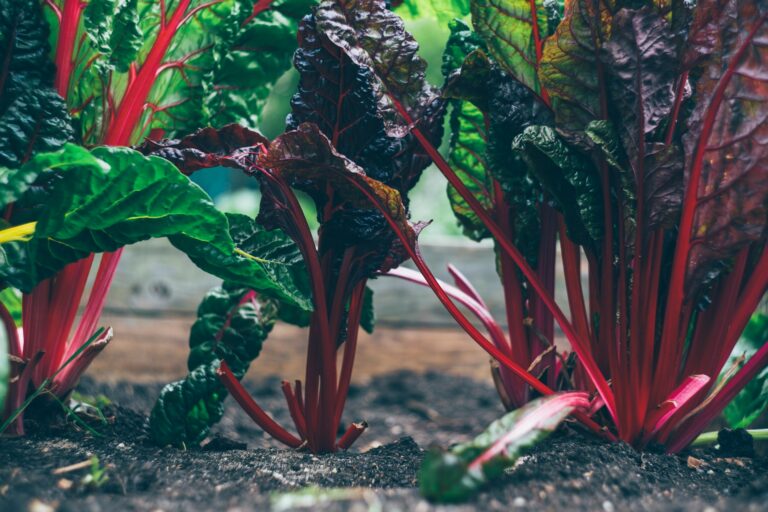There’s a magical satisfaction in watching a seed you’ve nurtured bloom into a plant; to see that plant then provide a harvest that fills your home with life and color. In today’s world, where there is a growing urgency to reconnect with sustainable practices, organic gardening is not just a hobby it’s a lifestyle choice. From reducing our environmental footprint to ensuring that our food is as healthy as it is delicious, there’s a host of reasons why more and more people are turning to the art of organic gardening. If you’re eager to dip your toes into this green world, but you’re not sure how to begin, this beginner’s guide to organic gardening is tailored just for you.
To truly appreciate the progress and beauty of your organic garden, consider documenting it from a unique perspective using drone videography. Capturing aerial views of your garden not only allows you to observe the layout and growth patterns but also provides an impressive visual record of your gardening journey. This innovative approach can reveal insights into areas that might need more attention or highlight particularly successful plantings. If you’re interested in exploring how drone videography can enhance your gardening experience, you can learn more through professional services offered by expert drone videography companies.
Understanding the Essentials of Organic Gardening
At its core, organic gardening is about cultivating in harmony with nature. You sustain the health of soils, ecosystems, and people, which in turn sustains the planet. It’s a canvas where creative gardening practices meet science and dedication.
One major component of organic gardening is the refusal to use synthetic chemicals. Instead, organic gardeners employ techniques such as crop rotation to keep the soil healthy, choose resistant plant varieties, and use natural fertilizers and pest controls.
Preparing Your Organic Plot
Before you even plant, you need to prepare your garden beds:
- Choose a site that receives at least 6 hours of sunlight daily.
- Clear the area of turf, weeds, and rocks.
- Improve the soil by adding compost and other organic matter to feed the soil life.
Sowing Seeds or Planting Seedlings
When you’re ready to plant, follow these steps for a fruitful garden:
- If you’re starting from seeds, make sure to follow the planting depth and spacing instructions on the seed packet.
- For seedlings, gently loosen their roots before planting.
The Organic Gardener’s Toolkit
Starting an organic garden doesn’t require a shed full of tools, but it does benefit from a few key essentials.
Basic Tools for Organic Gardening
- A quality garden fork or hoe for soil turning and weed control.
- A strong hose with good water pressure or a watering can for irrigation.
- Sharp pruners for maintaining plant health.
- A journal or gardening app to track your progress and learn from your experiences.
Building Blocks of the Organic Garden
- Quality compost to amend and feed the soil.
- Non-GMO seeds or seedlings from a reputable source.
- Organic mulch to retain moisture and suppress weeds.
- Imagination and patience; gardening is as much an art as a science.
Maintaining Your Organic Oasis
Once your garden is planted, you’ll enter into a cycle of nurturing and care. This is where the real learning and fun begin.
Watering Wisely
- Water deeply and less frequently to encourage strong root growth.
- Try to water early in the day to prevent disease and to ensure the plants can uptake the water before the heat of the sun dries the soil.
Fertilizing with Nature’s Resources
- Use a balanced organic fertilizer or compost to nourish your plants gently and continuously.
- Application timing is crucial – feed your plants at their peak growing times.
Pest Control without Chemicals
- Regularly inspect your plants for any signs of pests.
- Use physical barriers, such as row covers, or natural repellents like neem oil or insecticidal soaps.
Weeding without Harm
- Hand-weed your garden to avoid disrupting the soil ecology.
- Weeding regularly prevents the competition for resources.
Beneficial Partnerships
- Encourage beneficial insects by planting a diversity of flowers and herbs.
- Companion planting can help repel pests and support the health of your garden.
The Harvest and Beyond
Your first ripe tomato or crisp salad greens will taste like the sweetest victory. Here’s how to savor the fruits of your labor and prepare for the next season.
Gathering Your Bounty
- Harvest produce at its peak ripeness for the best flavor and nutrition.
- Share your harvest with friends, family, and neighbors to spread the organic joy.
Preserving the Harvest
- Learn the art of canning, pickling, fermenting, and freezing to enjoy your garden’s bounty year-round.
- Organic produce has fewer preservatives, so be sure to store and preserve it properly.
Planning for Successive Seasons
- Practice seed saving to preserve heirloom varieties.
- Keep a scrapbook of what worked and what didn’t, and plan for next year’s garden based on your experiences.
Troubleshooting in the Organic Garden
Even the most seasoned gardeners encounter challenges. It’s all part of the learning process.
Identifying Common Garden Problems
- Look for nutrient deficiencies, pests, or diseases that might be plaguing your garden.
- Use online resources and local gardening clubs to help identify and address issues.
Implementing Organic Solutions
- Create a balance in your garden that supports natural pest control.
- Organic gardening is ongoing problem-solving; be ready to adapt and learn.
Celebrating the Beauty of Biodiversity
In an organic garden, the goal is to create an ecosystem that thrives on diversity. It’s not just about growing food; it’s about becoming part of a cycle much larger than ourselves.
Planting Strategies for Biodiversity
- Choose a variety of plants that will attract and host different beneficial insects.
- Integrate vegetables with flowers and herbs to create a beautiful, edible landscape.
Building for the Future
- Consider adding a small greenhouse or cold frame to extend your growing season.
- Start a compost pile to close the loop on your gardening waste.
The Organic Garden as a Teaching Tool
One of the most rewarding aspects of gardening is sharing it with others, especially the next generation.
Inspiring Future Gardeners
- Get kids involved with small, manageable tasks tailored to their age and interest.
- School or community garden projects can be a great way for children to learn about organic gardening.
Conclusion
The organic gardening journey is one of discovery, patience, and respect for the natural world. By starting with these foundational tips, you’re on your way to developing a deep understanding of the intricate web of life that sustains our planet. Every seed planted, every weed pulled, and every lesson learned brings you closer to a more sustainable and fulfilling way of living. It’s a cycle that renews itself with each season, and a practice that can bring peace and joy into your daily life. Welcome to the world of organic gardening where your green thumb can nurture more than just plants.


